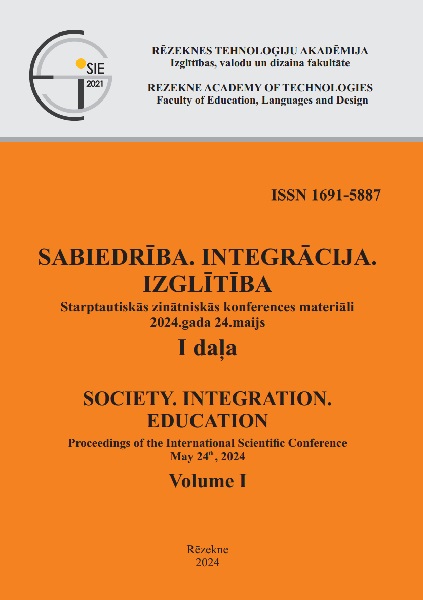PORTFOLIO OF RESEARCH PROJECTS AS A PREROGATIVE OF UNIVERSITIES TO ENSURE FINANCIAL AUTONOMY
DOI:
https://doi.org/10.17770/sie2024vol1.7807Keywords:
university funding models, basic and applied research, research projects, R&D technology portfolio, financial autonomyAbstract
The growing role of higher education in modern society and the expansion of the boundaries of science require a change in the models of university funding through the integration of certain corporate governance mechanisms. Of particular importance is the ability of universities to attract funding, including from private sources, by combining basic and applied research. It is critical for universities to find an optimal balance between basic and applied research when making decisions on launching new projects and programmes or adjusting existing ones.
The purpose of the article is to determine the peculiarities of forming a balanced portfolio of research projects to ensure the financial autonomy of modern universities.
The scientific research uses general scientific and special methods, in particular: analysis and synthesis; comparison, systematisation and generalisation, and the graphical method to clearly present the theoretical and practical provisions of the scientific article.
The proposed approaches to assessing the university's portfolio of technological innovation developments will contribute to the efficient use of limited resources, prioritisation, risk analysis and monitoring of results in the short and long term. This will create a network of partners to share knowledge, research and resources.
References
Arman, H. (2019). A Practical Strategic Planning Approach for R&D Organisations. In: R&D Management in the Knowledge Era. Innovation, Technology, and Knowledge Management (eds. T. Daim, M. Dabić, N. Başoğlu, J. Lavoie, B. Galli), Cham: Springer, 145–159. DOI : https://doi.org/10.1007/978-3-030-15409-7_5
Bentley, P., Gulbrandsen, M. & Kyvik, S. (2015). The relationship between basic and applied research in universities. Higher Education, 70 (4), 689–709. DOI : https://doi.org/10.1007/s10734-015-9861-2
Burgher, J. & Hamers, H. (2020). A quantitative optimization framework for market-driven academic program portfolios. International Journal of Educational Management, 34 (1), 1–17. DOI : https://doi.org/10.1108/IJEM-03-2018-0099
Crawley, E., Hegarty, J., Edström, K. & Garcia Sanchez, J.C. (2020). Universities as Engines of Economic Development, Cham: Springer.
Etzkowitz, H. & Leydesdorff, L. (2000). The dynamics of innovation: From National Systems and ‘‘Mode 2’’ to a Triple Helix of university–industry–government relations. Research Policy, 29(2), 109–123. DOI : https://doi.org/10.1016/S0048-7333(99)00055-4
Lyken-Segosebe, D. & Shepherd, J. C. (2013). Higher Education Leadership and Policy Studies Peabody College of Education and Human Develop-ment, Nashville, TN: Vanderbilt University.
Mangram, M. E. (2013). A simplified perspective of the Markowitz portfolio theory. Global Journal of Business Research, 7(1), 59–70.
Rücker Schaeffer, P., Fischer, B. & Queiroz, S. (2018). Beyond Education: The Role of Research Universities in Innovation Ecosystems. Foresight and STI Governance, 12 (2), 50–61. DOI: https://doi.org/10.17323/2500-2597.2018.2.50.61
Tijssen, R. J. W. & Winnink, J. (2016). Twenty-first century macro-trends in the institutional fabric of science: Bibliometric monitoring and analysis. Scientometrics, 109, 2181–2194. DOI: https://doi.org/10.1007/s11192-016-2041-z
Wells, R. & Wells, C. (2011). Academic program portfolio model for universities: Guiding strategic decisions and resource allocations. Research in Higher Education Journal, 11 (1). https://www.aabri.com/manuscripts/11745.pdf.
Xu, G., Wu, Y., Minshall, T. & Zhou, Y. (2018). Exploring innovation ecosystems across science, technology, and business: A case of 3D printing in China. Technological Forecasting and Social Change, 136, 208–221. DOI: https://doi.org/10.1016/j.techfore.2017.06.030






